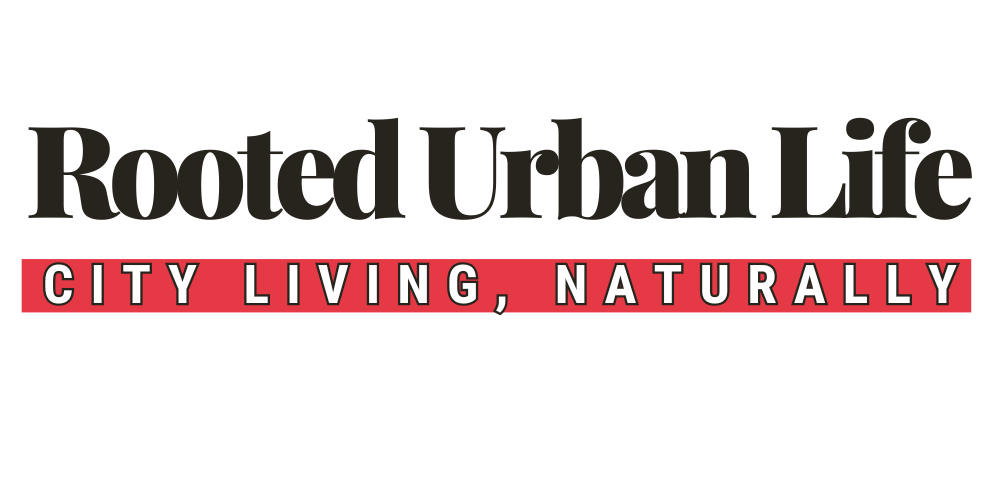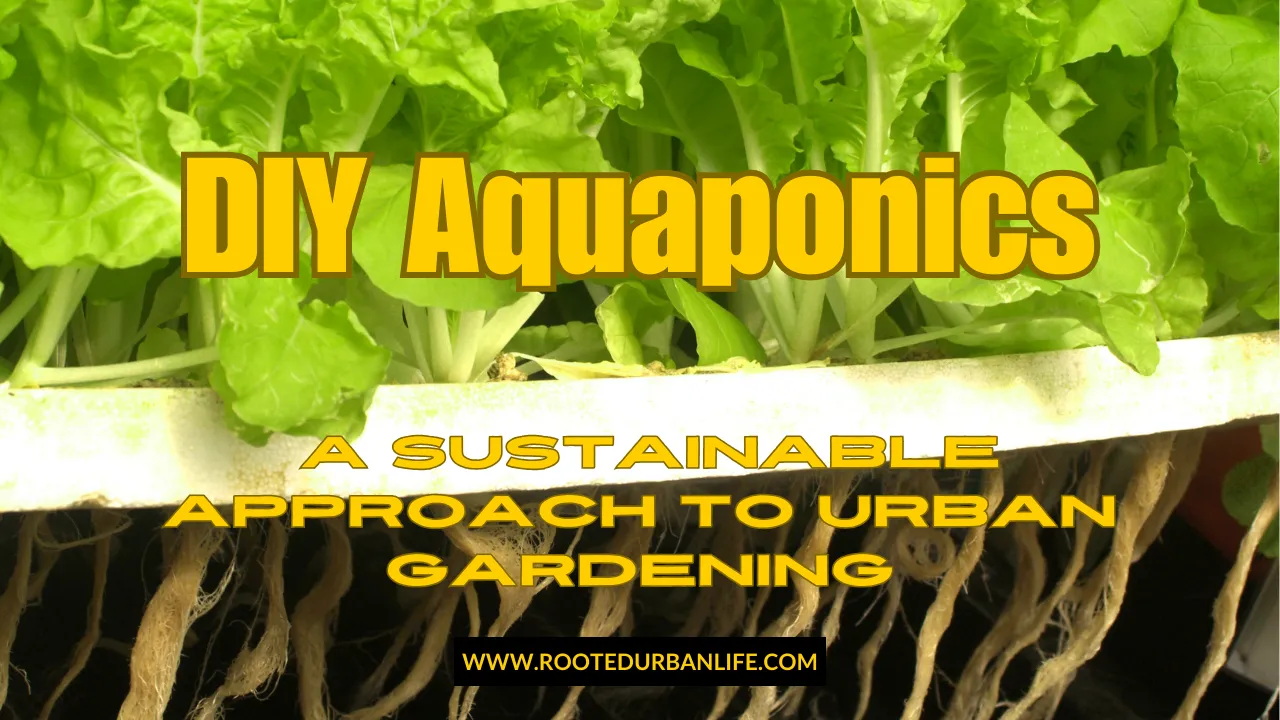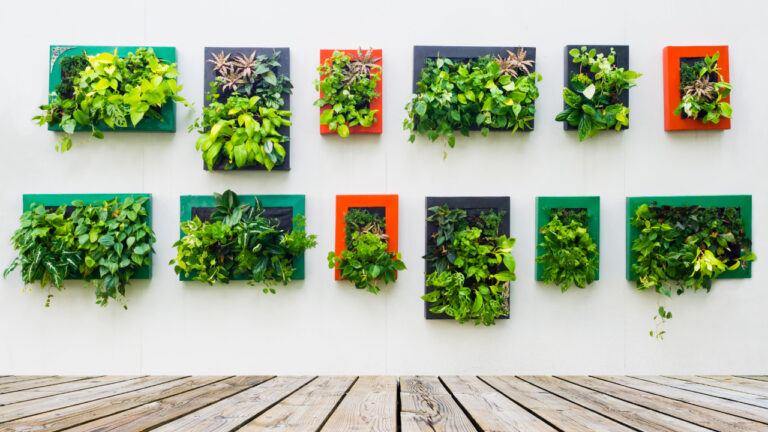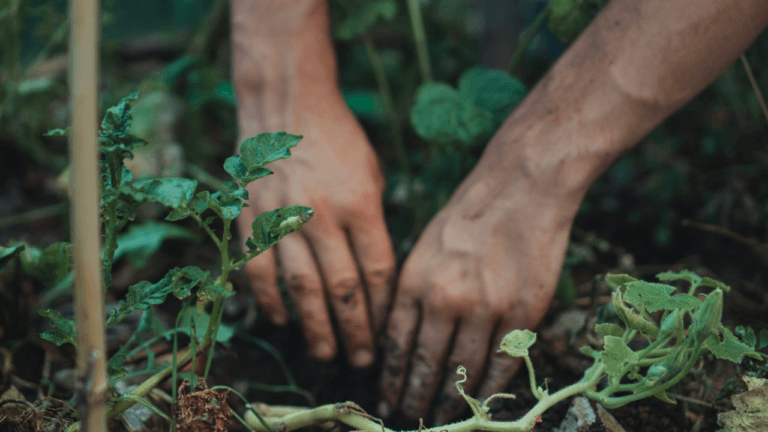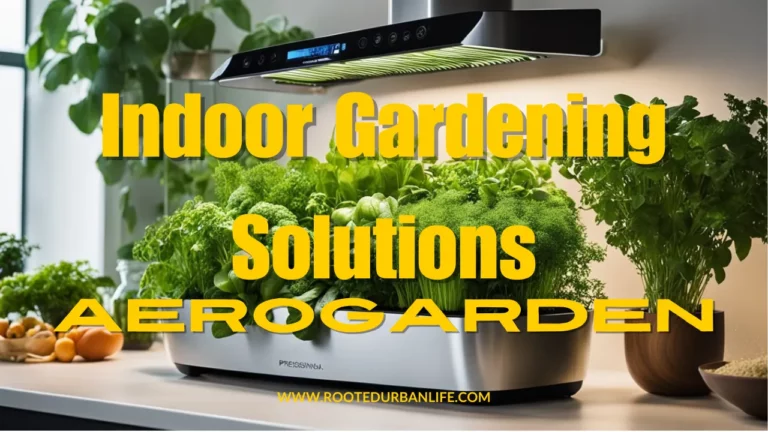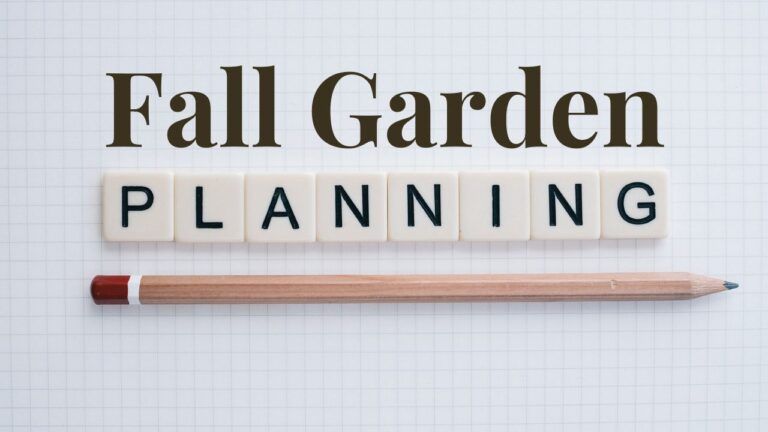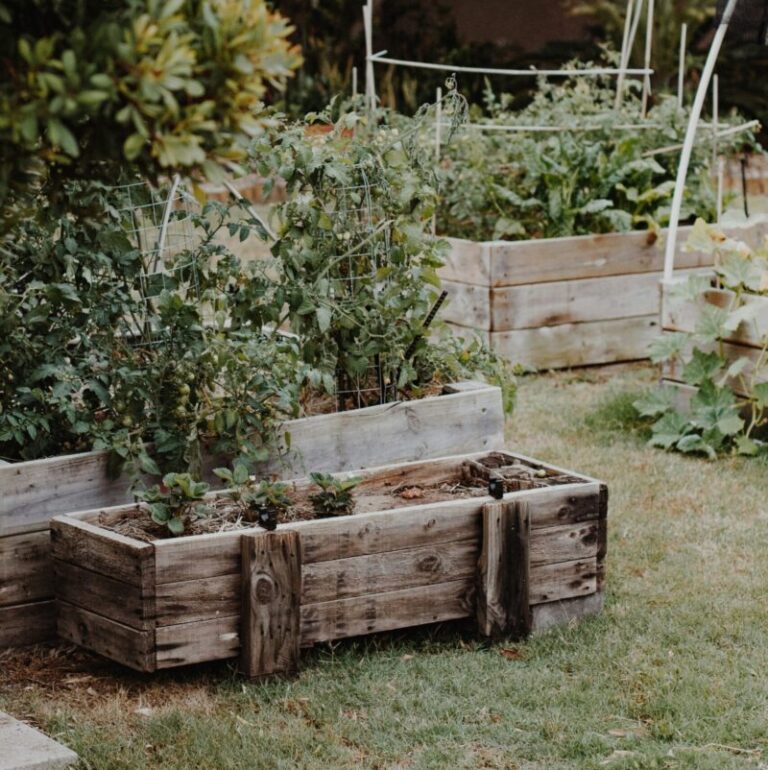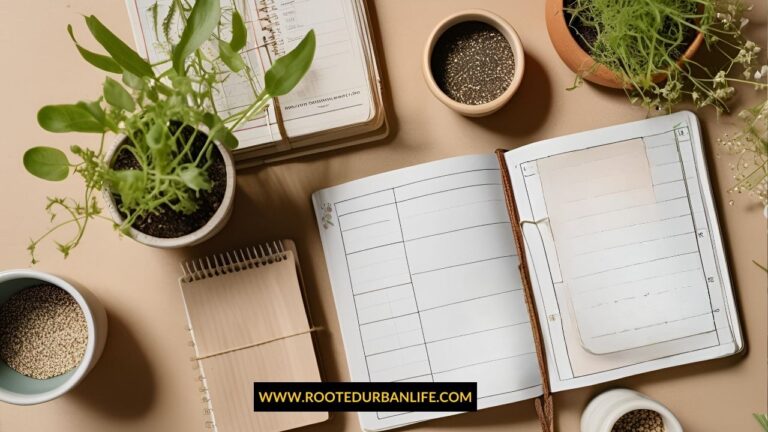DIY Aquaponics For Urban Gardeners: A Sustainable Approach to Urban Gardening
Aquaponics is a clever and sustainable way to grow food in small spaces. Many urban gardeners want to produce fresh vegetables and fish without needing a large plot of land. DIY aquaponics systems can help you create an efficient setup right in your backyard or on your balcony.
Read more: DIY Aquaponics For Urban Gardeners: A Sustainable Approach to Urban Gardening| Aquaponics is a sustainable gardening method that combines aquaculture (raising fish) and hydroponics (growing plants in water) in a closed-loop system. In this setup, fish waste provides nutrients for the plants, while the plants help filter and purify the water for the fish. This efficient approach allows urban gardeners to produce fresh vegetables and fish in small spaces, making it ideal for balconies, patios, or backyards. |
DIY Aquaponics
Setting up an aquaponics system is easier than you might think. You can grow fish and vegetables together, allowing them to support each other naturally. This method not only conserves water but also promotes healthy, organic food production.
Whether you are just starting or looking to improve your garden, understanding the basics will ensure success. With simple materials and some dedication, you can transform your urban space into a thriving food source.
Understanding Aquaponics
Aquaponics is a sustainable method of growing food that combines aquaculture and hydroponics. In this system, fish, plants, and beneficial bacteria work together to create a balanced environment. You will see how these components interact and why they are essential for success in urban gardening.
Principles of Aquaponics
Aquaponics relies on a closed-loop system. Fish produce waste, which is rich in nutrients. These nutrients are absorbed by plants, which help clean the water. The clean water is then recirculated back to the fish tanks.
This process reduces the need for chemical fertilizers and conserves water. In fact, aquaponics can use up to 90% less water than traditional farming methods. You can grow a variety of plants, including vegetables and herbs, alongside fish such as trout or tilapia.
The balance of fish and plants is crucial. If you add too many fish, the system can become unbalanced. The same applies if you overcrowd the plants. Proper management is key to a successful aquaponics setup.
Comparison with Hydroponics and Aquaculture
Aquaponics combines elements of hydroponics and aquaculture, but it is distinct from both. In hydroponics, plants are grown in a nutrient solution without fish. While plants can grow quickly in hydroponics, it requires constant monitoring of nutrient levels.
Aquaculture, on the other hand, focuses on raising fish in tanks. It often involves significant management of water quality and fish health. Aquaponics seamlessly integrates both systems, maximizing efficiency and sustainability.
In summary, aquaponics provides a holistic approach, allowing you to raise fish and grow plants simultaneously. This system reduces waste, conserves resources, and offers a productive way to garden in urban settings.
The Role of Beneficial Bacteria
Beneficial bacteria are a vital part of the aquaponics system. These microorganisms help convert fish waste into nutrients that plants can absorb. This process is known as nitrification and involves two main steps:
- Ammonia Conversion: The bacteria first convert harmful ammonia from fish waste into nitrites.
- Nitrite Conversion: Another type of bacteria then converts the nitrites into nitrates, which are less toxic and easily utilized by plants.
Maintaining a healthy population of these bacteria is essential for the system’s success. You can encourage beneficial bacteria by using a variety of substrates and not over-cleansing the system.
A balanced ecosystem not only supports your plants but also keeps the fish healthy. This symbiotic relationship is key to productive urban gardening.
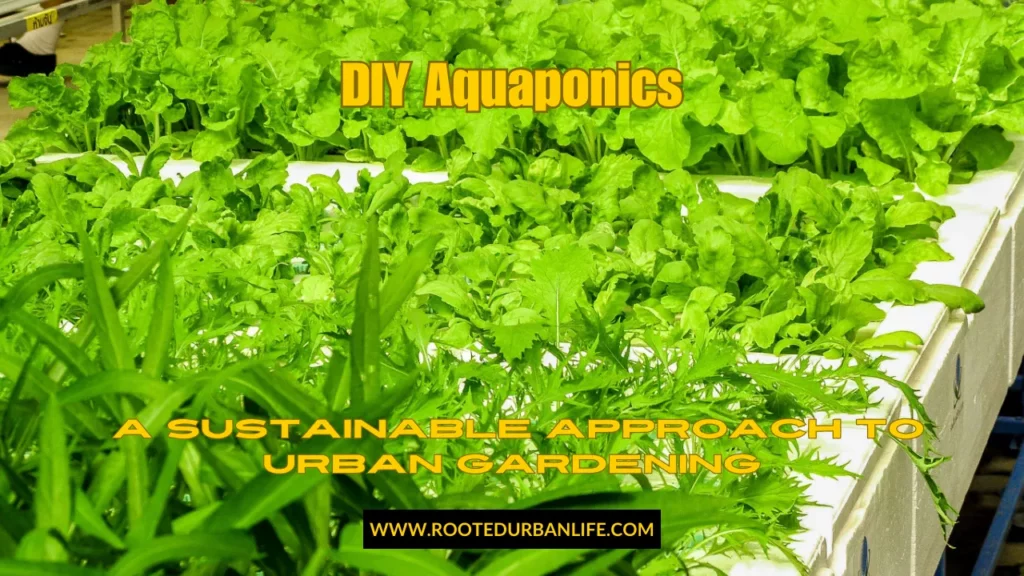
Starting Your DIY Aquaponics System
Setting up your DIY aquaponics system requires careful planning. You need to choose a good location, gather essential components, and design your layout. Each step plays an important role in creating a successful small aquaponics system.
Choosing the Right Location
Select a location that has enough sunlight, ideally 6-8 hours a day. A space near a water source simplifies things.
Consider nearby trees or buildings that might block sunlight. Make sure the area is accessible for maintenance and harvesting.
Choose a flat surface for your Aquaponics System. If you’re working indoors, a well-lit room or greenhouse can work well. The right spot helps plants grow and keeps fish healthy.
Essential Components of an Aquaponics System
Your system will need several key components to function properly. First, you require a fish tank. This is where you will keep your aquatic life.
Next, you will need grow beds for your plants. These can be made from various materials, like plastic or wood.
You also need a water pump to move water from the fish tank to the grow beds. This helps deliver nutrients from fish waste to your plants. Aeration is important too. Consider adding an air pump and stones to keep the water oxygenated.
Designing Your System Layout
Layout design is crucial in a home aquaponics system. Start by placing the fish tank at a lower level than the grow beds. This allows gravity to help return water to the tank.
You can choose from different designs such as media-based or nutrient film technique. Media beds use clay pebbles to support plants. Nutrient film is a method where water flows over roots without soil.
Draw a simple diagram of your setup. This will help you visualize where everything goes. Adjust your design as needed to ensure easy access for maintenance and harvesting.
Maintaining Water Quality and System Health
Keeping your aquaponics system healthy starts with maintaining water quality. Good water quality supports plant growth and provides a suitable environment for fish. You need to focus on the nitrogen cycle, monitor key water parameters, and have an effective filtration system in place.
The Nitrogen Cycle in Aquaponics
The nitrogen cycle is crucial in aquaponics. It starts when fish produce waste, which contains ammonia. Beneficial bacteria convert ammonia into nitrites and then nitrates, which plants use as nutrients.
To support this cycle, add beneficial bacteria to your system. You can do this by using bacteria in a starter package or ensuring your system has some established plants. Regularly check the levels of ammonia, nitrites, and nitrates in the water. Aim for 0 ppm of ammonia and nitrites, while keeping nitrates between 20-40 ppm for optimal plant growth.
Monitoring and Adjusting Water Parameters
Monitoring water parameters will help you maintain a healthy system. Key factors to check include pH, temperature, and dissolved oxygen.
- pH Level: Aim for a pH between 6.0 and 7.0. You can adjust it by adding vinegar to lower pH or baking soda to raise it.
- Temperature: Most fish thrive in temperatures between 65°F and 80°F. Use a heater or chiller to regulate the water.
- Dissolved Oxygen: Keep dissolved oxygen levels above 5 mg/L for fish health. Air stones or water pumps can help increase oxygen levels.
Regular testing with a reliable water testing kit will keep you informed about your system’s health.
Filtration Systems
A good filtration system is essential for clear and clean water. There are a few main types of filters to consider.
- Mechanical Filters: These remove solid waste from the water. You can use sponge filters or settling tanks.
- Biological Filters: Biological filters support the growth of beneficial bacteria. These can be added to your existing system or used as standalone units.
- Chemical Filters: Activated carbon filters help remove impurities and odors.
Setting up a multi-stage filtration system can optimize the water quality and improve plant growth. Make sure to clean and maintain your filters regularly to ensure they work effectively.
Plant and Fish Selection
Choosing the right fish and plants is crucial for a successful aquaponics system. You want to pick species that work well together and thrive in your environment. Below are the best fish species and tips for selecting plants.
Best Fish Species for Aquaponics
When selecting fish for your aquaponics system, consider species that grow well in tanks and produce enough waste to nourish your plants. Here are some popular options:
- Tilapia: Easy to care for, tilapia are hardy fish. They grow quickly and are tolerant of various water conditions.
- Catfish: These fish adapt well to smaller tanks and provide a good source of waste. They are also disease-resistant.
- Perch: Known for their fast growth rate, perch love cool water and can thrive in many setups.
- Koi and Goldfish: While not typically used for food, they can be excellent for decorative systems and produce enough waste for plants.
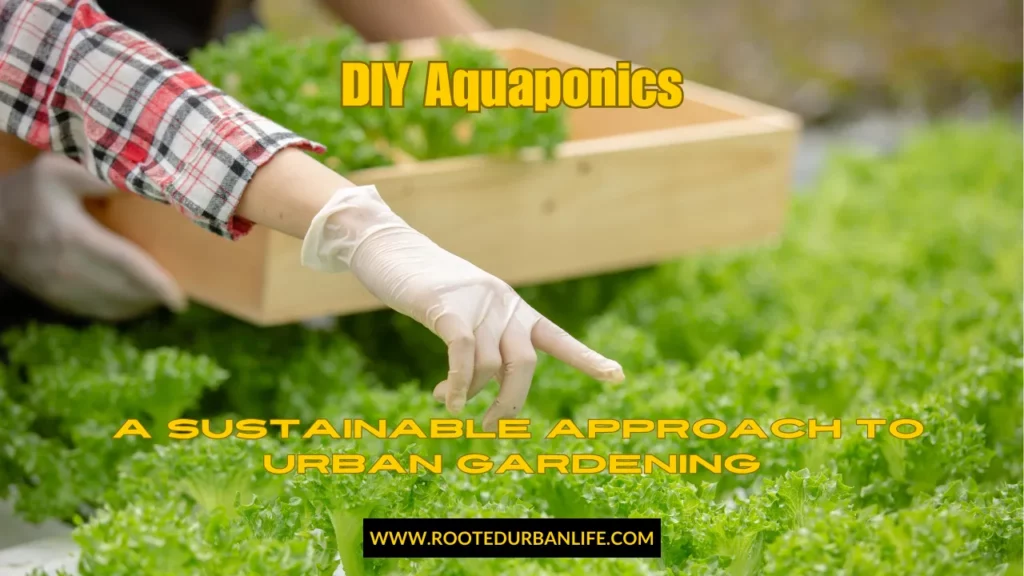
Choosing Plants for Your Aquaponics System
Choosing the right plants is as important as selecting the fish. Focus on varieties that grow well in aquaponics and can benefit from the nutrients in fish waste.
- Leafy Greens: Lettuce, spinach, and kale are great choices. They grow quickly and thrive in nutrient-rich water.
- Herbs: Basil, mint, and cilantro do well in aquaponics. They require good light and can add flavor to your meals.
- Fruiting Plants: Tomatoes and peppers can also be grown, but they need more care and light than leafy greens.
Ensure your plants are suited to the water conditions and space available in your system. This will help create a balanced and productive environment.
Advanced Techniques and System Optimization
You can improve your aquaponics system by using advanced techniques and optimizing it for better growth. These methods help create spaces for more plants and ensure a balanced ecosystem.
Vertical and NFT Systems
Vertical aquaponics systems allow you to maximize space in urban gardens. By stacking plant containers vertically, you can grow more plants in a smaller area. This design not only saves space but also enhances light exposure.
The Nutrient Film Technique (NFT) is another efficient approach. In NFT, a thin film of nutrient-rich water flows over the plant roots. This constant flow keeps the roots moist and allows them to access oxygen easily. Combining vertical and NFT systems can significantly increase your yield and reduce water use.
Creating a Self-Sustaining Ecosystem
A balanced ecosystem is crucial for a successful aquaponics system. You need the right balance of fish, plants, and bacteria. Choose fish that can thrive in your climate and are compatible with your plants. Common options include tilapia and goldfish.
Maintaining water quality is key. Regularly test pH, ammonia, nitrite, and nitrate levels. This helps you adjust conditions to keep your organisms healthy. You can also add beneficial bacteria to support plant growth.
Using a media-based system can help improve nutrient distribution. Gravel or clay pebbles can provide support for plants while aiding in filtration. This method works well alongside other systems to create a more robust environment.
Frequently Asked Questions
Aquaponics combines raising fish and growing plants. You might have questions on how to set up your system and keep it healthy. Here are some common inquiries about DIY aquaponics that will help you get started.
What are the essential components needed for constructing a DIY aquaponics system?
To build a DIY aquaponics system, you need a fish tank, a grow bed, a water pump, and tubing to connect them. Additionally, include a filtration system to keep the water clean. Some plants and fish, like tilapia and basil, also work well in these setups.
How can urban gardeners integrate fish into their aquaponic gardens efficiently?
Choose fish that are suitable for your local climate and size constraints. Tilapia and goldfish are popular choices. Make sure the fish tank has enough space and proper conditions for the fish. Monitor water quality closely to keep fish healthy.
What are the steps to create a small-scale aquaponics system in an urban environment?
Start by selecting a location with good light. Assemble your fish tank and grow bed, ensuring they are connected. Fill the tank with water and add fish. Then, plant seeds or young plants in the grow bed. Regularly check the water levels and pH.
What are common challenges and solutions for maintaining a healthy aquaponics system?
Common challenges include fish stress and water quality issues. Check the temperature and oxygen levels regularly. If plants show signs of nutrient deficiency, adjust the fish feeding schedule. Monitor pests on plants and use organic control methods.
How do you determine the appropriate size of a grow bed for a home aquaponics setup?
A good rule of thumb is to have one square foot of grow bed for every one inch of fish. Calculate the total weight of fish to establish the right size. Ensure the grow bed is deep enough to support the plants’ root systems.
Can you provide an estimated cost analysis for building a homemade aquaponics system?
Costs vary based on size and materials. A small setup might cost between $200 and $500. Budget for items like the tank, pump, grow bed, plants, and fish. Check local sources for materials to keep expenses down.
Key Takeaways
| You can create a DIY aquaponics system in small urban spaces. Fish and plants support each other in a sustainable cycle. Proper maintenance is key to a healthy aquaponics setup. |

